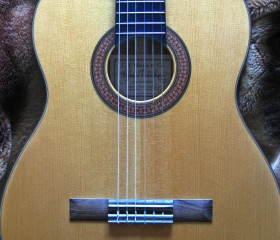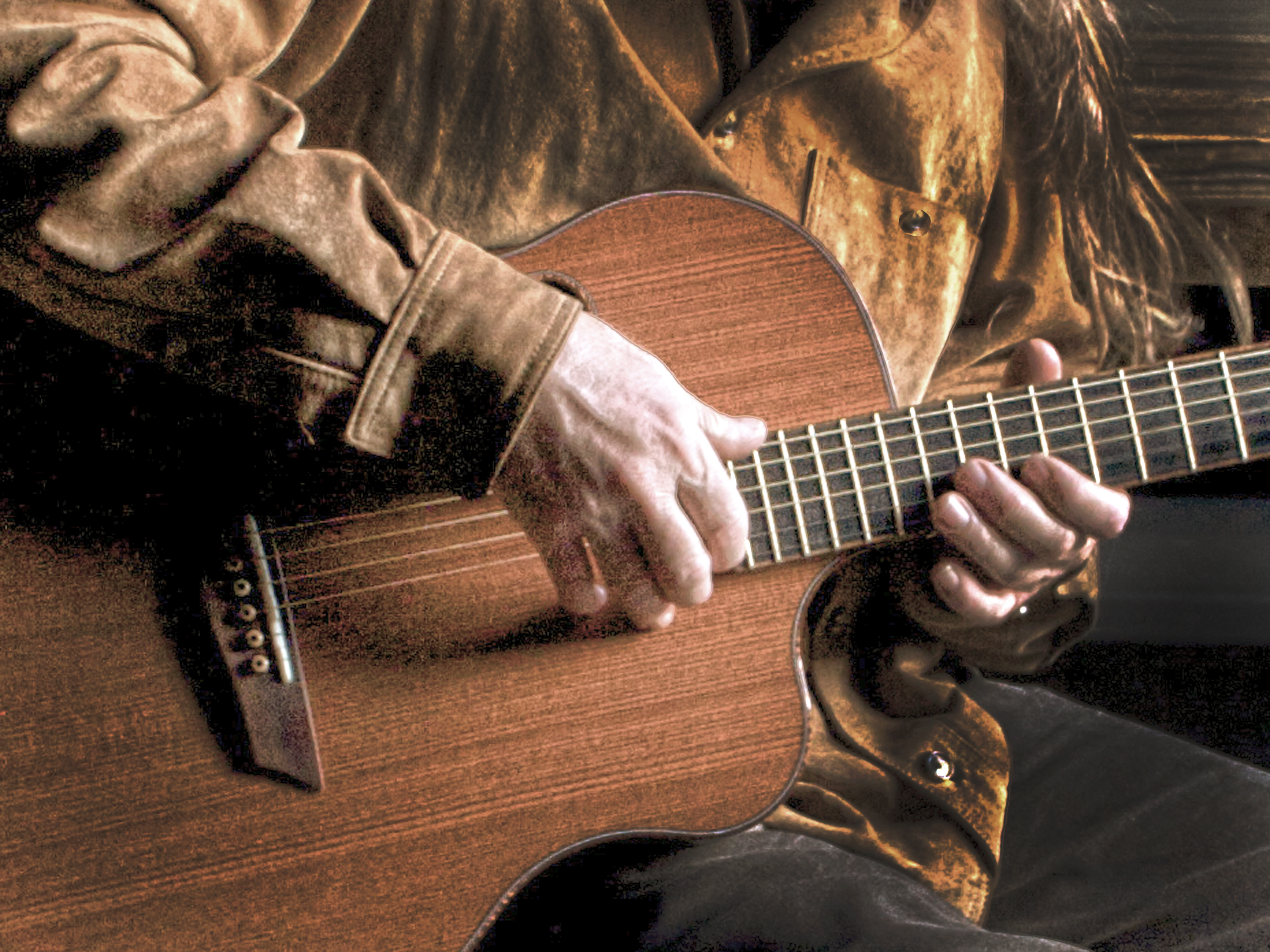I apprenticed with musician and luthier Tom Morgan of Dayton, Tennessee in working with acoustic instruments, and worked briefly for Warrior Guitars in Ringgold, Georgia. As someone who treasures acoustic music, I bring instruments to their fullest potential through a simple practice that opens their tone wood into a unique voice of clarity, complexity, and sustain.
An acoustic guitar is composed of various pieces of wood, usually from an assortment of trees sourced from around the world. The top wood is chosen for its strength and the character of its voice. Spruce for example combines high strength with great projection and clarity. Maple, a popular choice for jazz instruments, combines strength and beauty in a fast top, allowing notes to intersect and overlap without interfering. The back and sides may be made from a world of possibilities, each bringing a different character to the instrument’s voice and tone. Makers are sensitive to the subtleties of different woods even while they are in the raw plank form.
Included in the construction are glues designed to release with heat for repairs, and finishes such as lacquer or varnish or polyurethane. The finish must protect while still allowing the wood to sing. Then there are the strings made of steel and bronze, or nylon or gut. And the anchor points of the strings, the nut and saddle, may be made from ivory, bone, or synthetics. At one time, real tortoise shell pick guards adorned the tops, and today, fossilized ivory bridge pins from walrus or mammoth may be used to anchor the strings to increase the instrument’s sustain and projection. A guitar might be adorned with inlaid abalone and Mother of Pearl, or in some cases, the vintage equivalent affectionately known as Mother of Toilet Seat.
And then there are the tuners. As in violins, or traditional flamenco guitars, the tuners may be wooden friction pegs, but today most guitars feature geared metal tuners, some even with gold plating.
That’s quite a disparate assortment of materials to one day be picked up and asked to be a guitar.
Natural materials age gracefully, opening up through use to vibrate more freely and deeply. Finishes thin, or become porous, and the wood’s structure changes over time from the wear and tear of vibration. Thus today, Martin guitars, one of the world’s great instrument builders, is offering a proprietary Vintage Tone treatment to new guitars, ones whose internal wood structure has been modified to emulate the sound of a true eighty year old guitar. The process is called torrefaction, a kiln dried treatment that reduces the moisture content in a piece of wood to as low as possible while maintaining stability. Similar to aged wood, but the porous and worn nature of aged natural nitrocellulose lacquer is yet to be replicated. Both contribute to the top’s ability to sing.
I have for years trained my guitars to open them up. Their woods work together as a single breath of song with each touch of a string––
I school them in the art of singing.
The process is simple, and takes about a month for quality guitars. Under normal playing circumstances, a guitar will vibrate within the range its strings are capable of producing. As with most stringed instruments, its octave range is narrow and cannot by itself reap the benefit of the broader scope of tones at either end of the musical spectrum.
So I play music to them to teach them.
For about an hour a day, I play music through stereo speakers at close proximity that includes deep basses and ringing trebles beyond the guitar’s own voice. As if it was a double bass, or violin, the wood in its top, sides, and back learns to vibrate in these wider ranges by being driven by the incoming sound. I avoid distortion, choosing only music with clear, singing tones, moving from melody to more harmony and counterpoint.
As if by magic, over time the guitar opens up and blossoms with more overtones, complexity, and nuance. The results are tangible, and readily apparent.
I don’t limit the choices to instrumental music, I also use Whale Songs, Sounds of Water, Tibetan throat singing, and Meditative soundtracks at 432 Hz. You can learn more about tuning at 432 Hz versus 44o at my post elsewhere on this site: http://www.snowonwater.com/?p=3691
photo by Katherine Henry
In the photo above is my McPherson 4.5 with Redwood top and Brazilian Rosewood back and sides, and fossilized mammoth ivory bridge pins. This guitar and others can be heard on these compact discs available at Atelier Annex: http://www.atelierannex.com/collections/all
Below are some sonic examples that can be played on YouTube that I use to expand an instrument’s range. Give it a try. It really works!
David Hykes
Underwater Whale Sounds – Full 60 Minute Ambient Soundscape
https://www.youtube.com/watch?v=savCAd6RyPI
432 Hz | Deep Sleep Calming (1 Hour) Meditation
https://www.youtube.com/watch?v=RaF0fZKMiJ4
Koyaanisqatsi Movie Full Soundtrack – Phillip Glass (1982)
https://www.youtube.com/watch?v=t-t8w08QNJM
Bach Cello Suite No.1 – Prelude (Yo-Yo Ma)
https://www.youtube.com/watch?v=PCicM6i59_I
You can learn more about luthier and International Bluegrass Music Association Hall of Fame inductee Tom Morgan here: http://www.snowonwater.com/?p=3830






